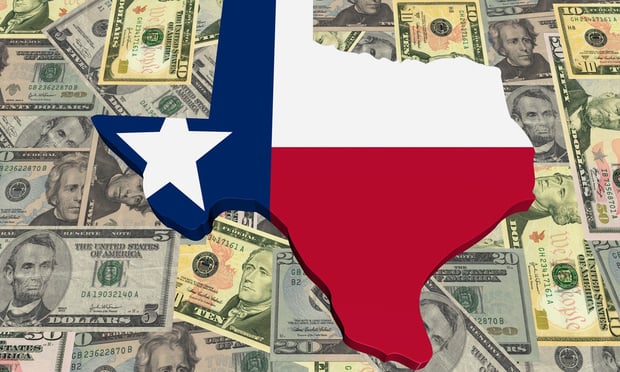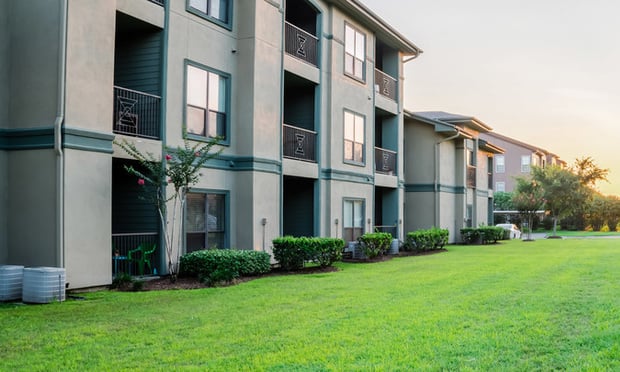DALLAS—Unlike previous downturns such as the Great Recession of 2008-2009, the Dallas-Fort Worth retail real estate market entered the current pandemic-induced downturn from a position of strength. One of retail's benefits going into the pandemic was its back-to-back years of healthy performance as well as a decade of near-historic low retail construction that kept oversupply to a minimum, according to a mid-year report by Weitzman.
That overall health is combined with programs such as PPP loans and landlords' willingness to collaborate with tenants on workouts that often include rent deferrals. These programs have helped limit what otherwise could have been a more significant decline in overall retail occupancy. However, the metro area's retailers, restaurants and retail landlords are now struggling to identify the best methods to deal with the unprecedented challenge posed by COVID-19, which has resulted in increased unemployment, greatly reduced shopper traffic and mandated closings or reduced capacity limits.
"This report is unlike any previous mid-year retail report in Weitzman's 30-year history," Marshall Mills, president and CEO of Weitzman, tells GlobeSt.com. "Never before have we faced a challenge like COVID-19, which hit hard at every segment of our economies and our lives, and seemingly all at once. The pandemic is affecting Texas' retail markets and its retailers, and we are not surprisingly reporting occupancy declines. But I have to tell you, without the evolution retail has undergone during the past few years, it could be much worse. Brick-and-mortar retailing has spent these years transforming with digital marketing and innovations like curbside, takeout and delivery to compete with online retailers of Amazon. As a result, our industry finds itself better prepared to perform during the social distancing required by current health crisis."
At mid-year 2020, the overall market occupancy stood at 92.6%, down from 93.4% at year-end 2019. The occupancy rate is based on a DFW retail market inventory of 200.2 million square feet in shopping centers with 25,000 square feet or more.
The market took a hit during the first half of 2020 as the pandemic resulted in numerous closings (including some from concepts that were already struggling pre-pandemic) or announced closings from chains such as JCPenney, Pier 1, Tuesday Morning and Stage Stores. For example, JCPenney is closing its Music City Mall location in Lewisville, Belk closed its 180,000-square-foot store at Dallas Galleria in March, Nordstrom announced its Hurst location will close in 2021, Tuesday Morning announced six store closings, Pier 1 will close its 14 area locations as it goes out of business, and both 24-Hour Fitness and Gold's Gym closed numerous locations.
The overall vacancy hit is reduced somewhat because many of the stores set to close are smaller format. For example, Neiman's off-price concept Last Call will close two area stores in the second half of the year but creating less than 28,000 square feet of total vacancy, Microsoft closed two stores accounting for less than 9,000 square feet of total space and Sur La Table will close its Plano store, which is around 6,500 square feet.
Most of the stores will not shutter completely until liquidation sales are completed but these concepts, adding to one-off closings of independent concepts, are resulting in more than 1.6 million square feet of anchor and junior anchor vacancy. The market is on course for additional closings, particularly if the duration of the pandemic continues through 2020 and into 2021. For example, Bed Bath & Beyond has announced hundreds of store closings, although targeted stores have yet to be identified.
Even if occupancy declines another point or two by year-end 2020, the market will still report its eighth consecutive year of DFW retail occupancy above 90%. When occupancy reached 90% in 2013, it marked the first time that point was reached in a decade. By contrast, during the previous down cycle of 2008-2009, overall occupancy dropped to 86%.
A further occupancy decline for DFW is expected, although the scope has yet to be determined because of the uncertain duration of the pandemic. The downturn should be limited if a COVID-19 treatment and/or vaccine are developed in the near term, and consumers again feel safe with shopping, dining and entertainment activities.
"Until that sense of safety is achieved and consumer confidence increases, it is up to the retail real estate industry and national, state and local governments to help lessen the massive challenges faced by retailers and restaurants during the current pandemic," said Herb Weitzman, executive chairman of Weitzman.
Leasing in existing retail projects continues, thanks to an economy that continues to create demand through residential and population growth. The leasing of existing retail projects contributes to occupancy because these leases represent the absorption of existing space.
Based on projects opening or scheduled to open, the market is on track to add approximately 1.3 million square feet in new and expanded retail projects during 2020. During 2019, the market reported new construction of only 1.7 million square feet and 3.5 million square feet in 2018.
The new space deliveries on track for 2020 remain conservative and reflect not only construction delays and caution during the pandemic but the trends of limited anchor expansions, existing project redevelopments, and mixed-use and unanchored retail projects (which tend to be well under 100,000 square feet), says the Weitzman report.
Conservative construction helped avoid the overbuilding that marked previous periods of strong retail market performance. However, it also reflects the continued contraction of retail due to several factors, including the Amazon effect.
Overall, Weitzman expects 2020 to report construction of approximately 1.2 million square feet based on projects underway or announced for completion. The largest project for 2020 is the expansion of Grandscape in The Colony, where Scheels added 331,000 square feet of new retail space.
The outlook for the remainder of 2020 calls for a decrease in occupancy, which should be mitigated in part due to extremely conservative new construction. Additionally, the DFW market continues to generate the type of population and residential growth that boosts retail business.
In terms of population growth, a March 2020 Census report noted that DFW gained more residents since 2010 than any other metro area in the country. Overall, the metro area added more than 1 million people in less than a decade, the report states.
Prior to the pandemic, DFW had a 117-month streak of positive job growth, the strongest employment market in its history. But, job losses due to the pandemic are reflected in the May 2020 unemployment rate of 12.3% versus the April rate of 12.8%. Job growth returned to DFW in May after two consecutive months of declines, CoStar reports, with the market adding 78,000 jobs from April to May. The initial lockdown of nonessential businesses and social distancing measures gutted the employment base, sending levels retrograde to 2016.
DFW single-family construction and new home sales were up during the first quarter of 2020 versus the same period in 2019. More than 8,000 new single-family homes started during first quarter 2020, according to MetroStudy, and the annualized rate shows almost 34,000 new single-family homes. Starts and sales declined during the second quarter due to the pandemic, according to the Real Estate Center at Texas A&M, yet DFW and Houston still led the nation in homebuilding activity.
In terms of multifamily, DFW is underway with around 29,000 units, according to CoStar, but occupancy and rent growth are being challenged by the pandemic. Overall occupancy, however, remains fairly healthy.
Want to continue reading?
Become a Free ALM Digital Reader.
Once you are an ALM Digital Member, you’ll receive:
- Breaking commercial real estate news and analysis, on-site and via our newsletters and custom alerts
- Educational webcasts, white papers, and ebooks from industry thought leaders
- Critical coverage of the property casualty insurance and financial advisory markets on our other ALM sites, PropertyCasualty360 and ThinkAdvisor
Already have an account? Sign In Now
*May exclude premium content© 2025 ALM Global, LLC, All Rights Reserved. Request academic re-use from www.copyright.com. All other uses, submit a request to [email protected]. For more information visit Asset & Logo Licensing.








